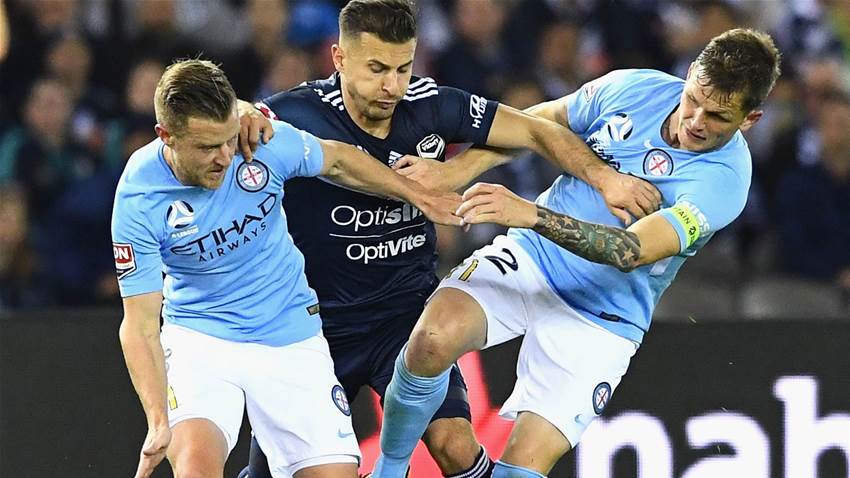The first Melbourne Derby of the 2017/18 season ended in delight for Melbourne City, who posed problems for Victory throughout the match which largely went unanswered.
The second key area which espoused elements of positional play was during the chance creation phase of possession, and particularly at the moment of penetration.

Ross McCormack played somewhat of a free role throughout the match in an aim to create numerical superiority in advanced areas of the pitch, but he also played a pivotal part in dictating the movements of those around him in the final third. As in the example of positional play during build-up earlier, all spaces must be filled in a way which provides a continuity of balance to the team, regardless of the individual who fills the position. The latter point is even more relevant in the final third, with each player in the City front four making a different movement depending on the direction of McCormack’s run.
In the example above, McCormack leaves the central area to take up a new position on the left wing. This causes the following reactionary movements to occur as his teammates look to ensure that four vertical channels are filled in order to attack with some degree of variability:
- Bruce Kamau, previously positioned on the left wing, makes a run into the left half-space, as McCormack has already filled his default position.
- Stefan Mauk looks to take advantage of the central space vacated by McCormack and progresses forward.
- Nick Fitzgerald continues his run to attack the space available behind the furthest full-back and in front of the far post.
The above movements are focused on occupying the four highlighted spaces in a way which is conducive to the successful creation of a goal-scoring opportunity. This movement causes defenders to be dragged out of position, causing havoc in the final third and spaces to open up in critical areas. City’s attempt at a version of positional play was successful and ensured an uneasy defensive performance from the usually resolute Melbourne Victory.
Conclusion
Although it is still very early in the season, Melbourne City look to be a completely different team under new boss Joyce, and have picked up maximum points from their first two games.
Kevin Muscat may well regret the inconsistent execution of a potential strategy to get Milligan and his midfield colleagues into space, with issues in possession plaguing his side for virtually the entirety of the game. The implementation of a form of positional play from Melbourne City looks set to pay dividends, with Ross McCormack offering more dynamism than Bruno Fornaroli has done in the past. All in all, a successful Melbourne Derby for City, whilst it was a disappointing night for the Victory.
Nathan Muir is an Australian tactical analyst and coach. You can find him on Facebook @ Nathan Muir Football or on Twitter @NathanKMuir.
Related Articles

Victory's Machach wants to make amends in decider

Leckie seals new marquee deal as Good, Maclaren head to Asia
.jpeg&h=172&w=306&c=1&s=1)












